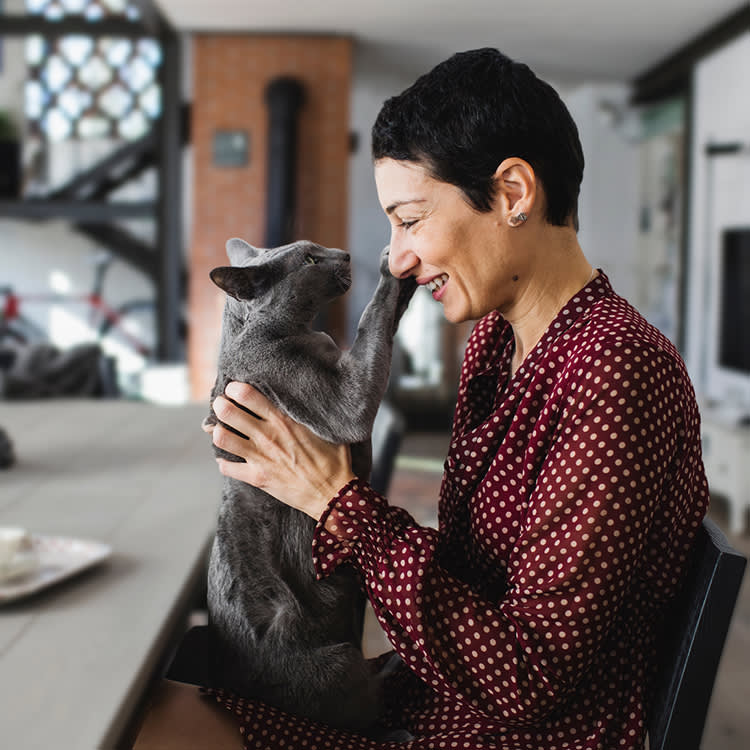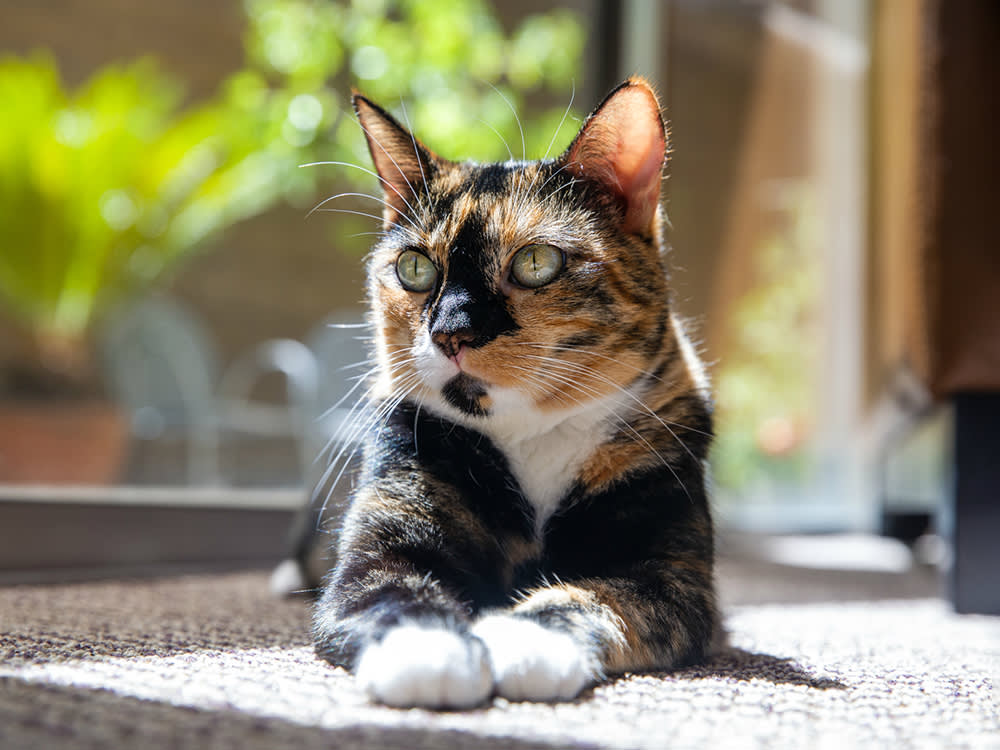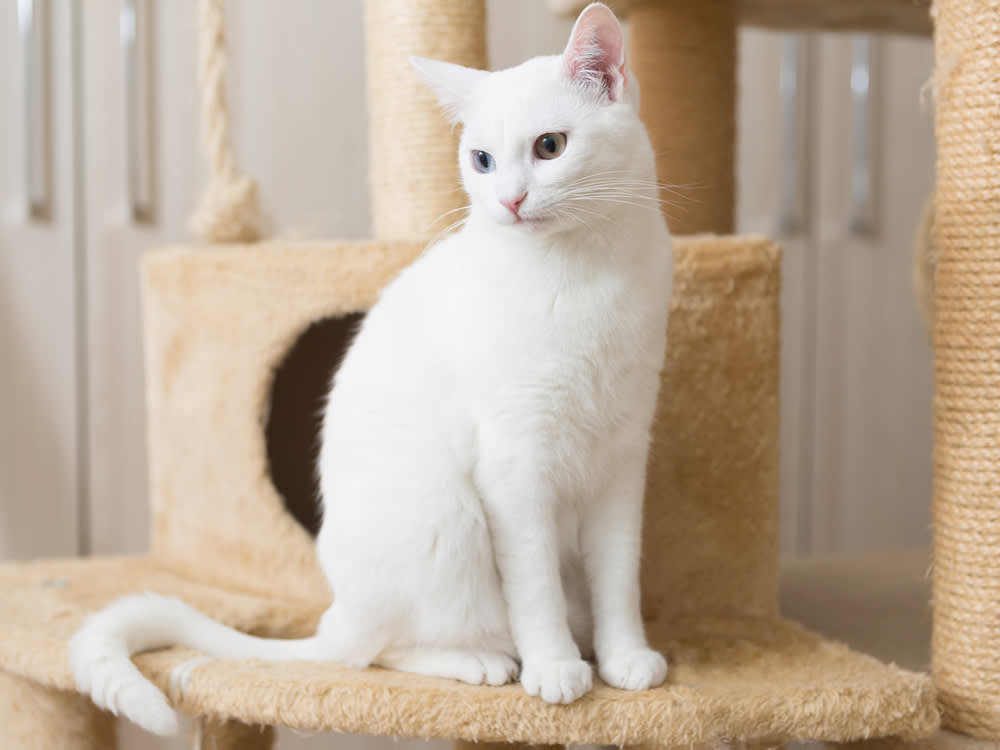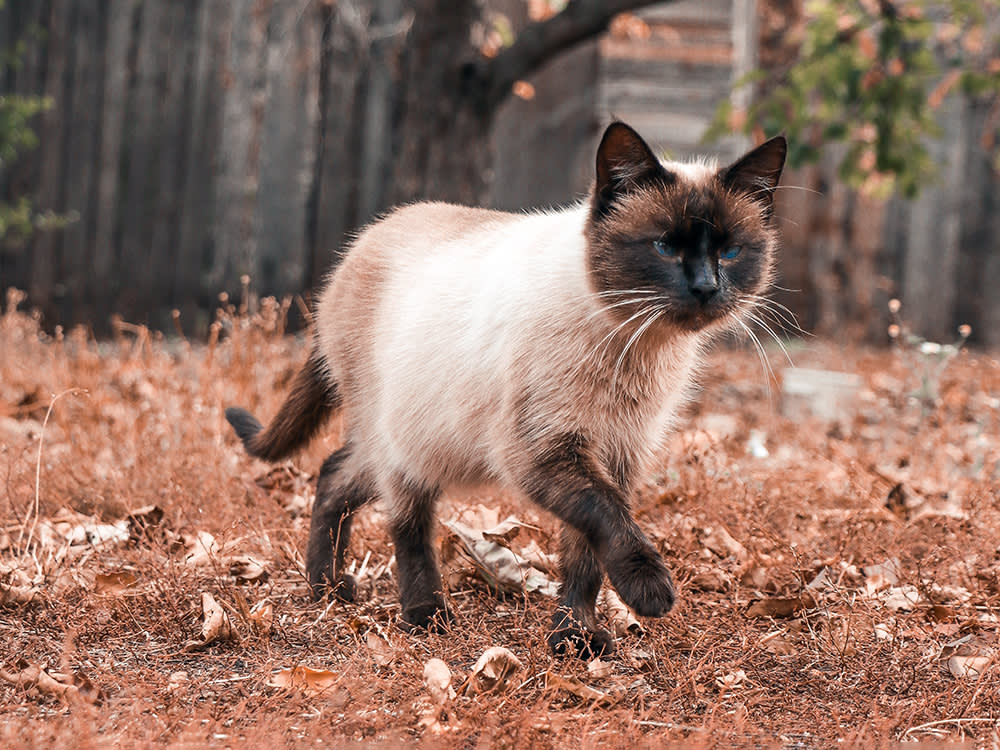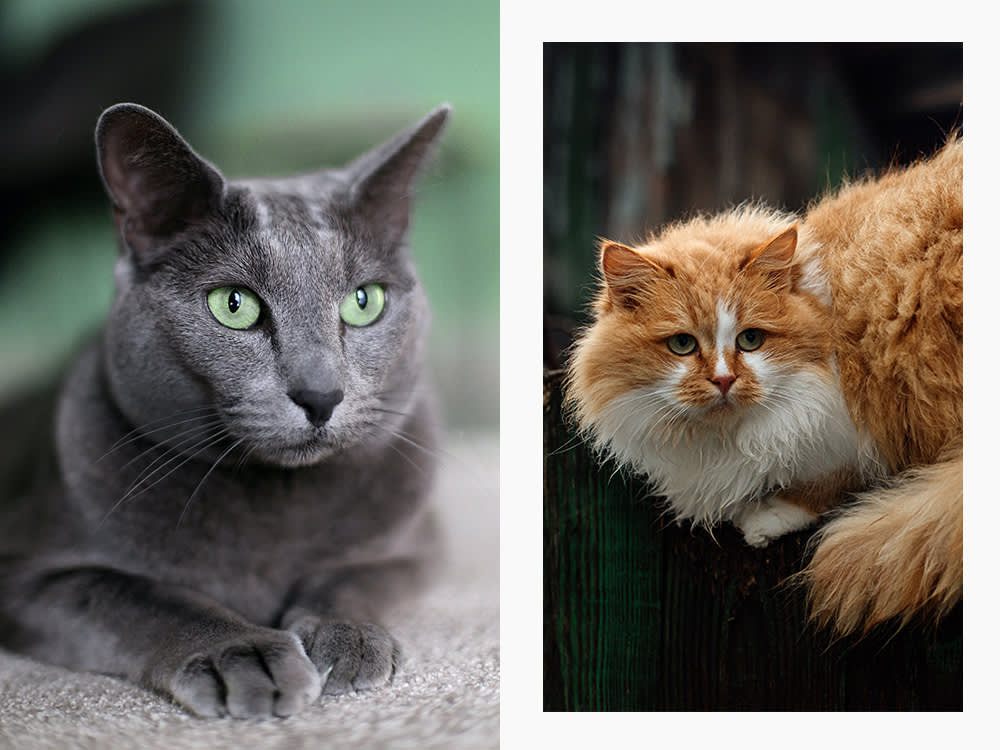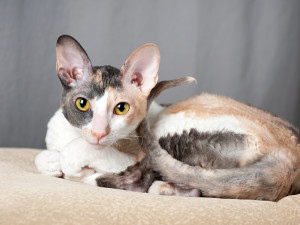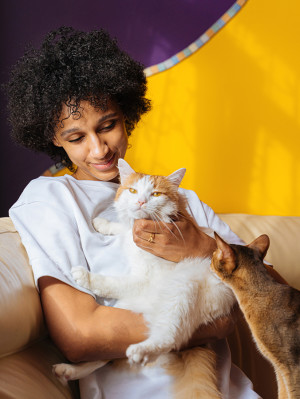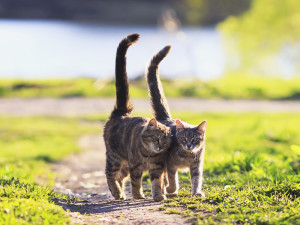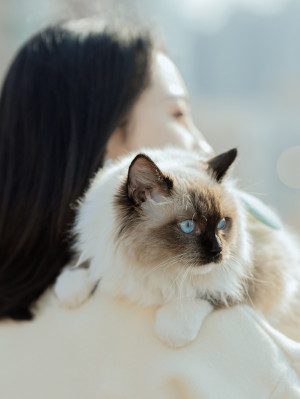Does Your Cat’s Fur Pattern Determine Their Personality?
It’s a little more complicated than that.
What can you tell about someone just by looking at their hair? Can you tell if they’ll be affectionate and friendly or aloof and guarded? If they’re athletic or lazy? Can you tell if they’ll enjoy dropping dead mice at your feet as a gift? Sorry, I forgot to mention that the “someone” in this scenario is a cat.
Cats can be tiny, fuzzy ciphers who spurn your attempts to understand them, so Kinship decided to look into whether their fur patterns can offer any insights into their behavior, personalities, and whims. Below, everything you wanted to know about cat fur and more.
Save on the litter with color-changing tech that helps you better care for your cat.
There are six main coat patterns for cats.
To know whether a cat’s coat pattern can tell us anything about their personality and behavior, we have to know what the different types of coat patterns are. Dr. Mark Freeman, a Clinical Assistant Professor for Community Practice at Virginia-Maryland Regional College of Veterinary Medicine at Virginia Tech, broke it down for us over email. How exactly they are divided up depends on who you ask, but cat coat patterns fall into six main categories. Most of them you probably already know, but who knows, maybe it’ll come up in a trivia game or something!
Solid (all colors except white)
Fairly self-explanatory. A solid fur pattern is one in which all the fur is one color. Like a black cat, for example.
How much do you spend on your pet per year?
Tabby
Tabby is the most common coat pattern for cats. And though tabbies come in a wide variety of colors — typically brown or gray, but also orange and cream — Dr. Freeman explains that in most cases “their individual hairs are banded in a light and dark color, with darker stripes, bands, or spots all over the body.”
Tortoiseshell, Calico, and Tricolor
Tortoiseshell and calico are “technically one pattern,” according to Dr. Freeman, and refer to the “patches” of color all over the cat’s body, usually black and brown, or orange and red. But while a calico pattern has large easily identifiable patches of color, the two colors are closely interwoven in a tortoiseshell pattern, making individual patches harder to identify. If a calico cat also has white markings, it is considered a “tricolor.”
White-Spotted, or Bi-Color, and Solid White
“Cats that are white with one other color are called bi-color,” Dr. Freeman says. This bi-color pattern is also sometimes referred to as piebald. Solid white cats are known as epistatic white. Epistatic white cats, especially ones with blue eyes, are more prone to deafness. Although they’re all white, they’re not albino.
Colorpoint
This is the classic Siamese cat pattern: a lighter base color, with darker fur around the “points,” (their face and ears, tails, and feet and legs.) Dr. Freeman added that “this coat pattern is also often associated with the albino trait, and can result in both blue-eyed and pink-eyed cats.” Colorpoint cats are also much more likely to have crossed eyes.
Silver and Golden
These cat colors are famously celebrated in the song “Silver and Gold” by Sam the Snowman in 1964’s Rudolph the Red-Nosed Reindeer. (Maybe it was just about Christmas decorations, but who’s to say.) According to Dr. Freeman, these coats result “from the suppression of specific pigmentation resulting in the base color being silver instead of gray, and gold instead of orange.” Often, they are accompanied by a tabby pattern. And sometimes, a snowman.
Coat patterns used to be more breed specific.
Maybe at one time, thousands of years ago, you could look at a cat’s fur pattern and accurately deduce its breed of origin, and by extension, its physical and behavioral characteristics. But over the years, so many tabby cats have bred with colorpoint cats, and solid cats with piebald cats, and so and so forth, genetic lines have become so diffuse that it’s hard to draw any meaningful conclusions. As Dr. Freeman put it: “The high degree of cross-breeding among domestic cats has resulted in coat patterns appearing on cats that are only marginally related to the breed in which the coat pattern originated.”
Can your cat’s fur tell you something about their personality? Eh, maybe.
Because so many generations of cross-breeding have spread different coat patterns far and wide, Dr. Freeman says only broad generalizations can be made. “There are commonly held beliefs, such as the tortoiseshell pattern is often associated with a more reactive temperament, the colorpoint breeds are more independent, and long-haired breeds are more aloof.” But these are not hard-and-fast truths. “There is a high degree of variation among individuals, even when these coat characteristics are present.
So, give your cats an opportunity to show you their personality rather than drawing any big conclusions from their furry ensembles.
Don’t ignore your cat’s fur completely.
Even if the coat pattern doesn’t tell you much about your cat’s general vibe, the quality of a cat’s fur can be a good indicator of their general health. According to VCA Animal Hospitalsopens in new tab, “a healthy coat should be shiny and smooth, not coarse and brittle, and healthy skin should be supple and clear, not greasy, flaky, or bumpy.”
Dr. Freeman offered that a good-quality diet, regular vet visits, and frequent brushings (especially for long-haired cats) go a long way toward keeping a healthy coat.
